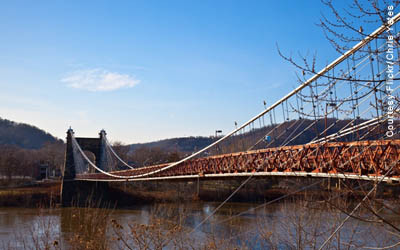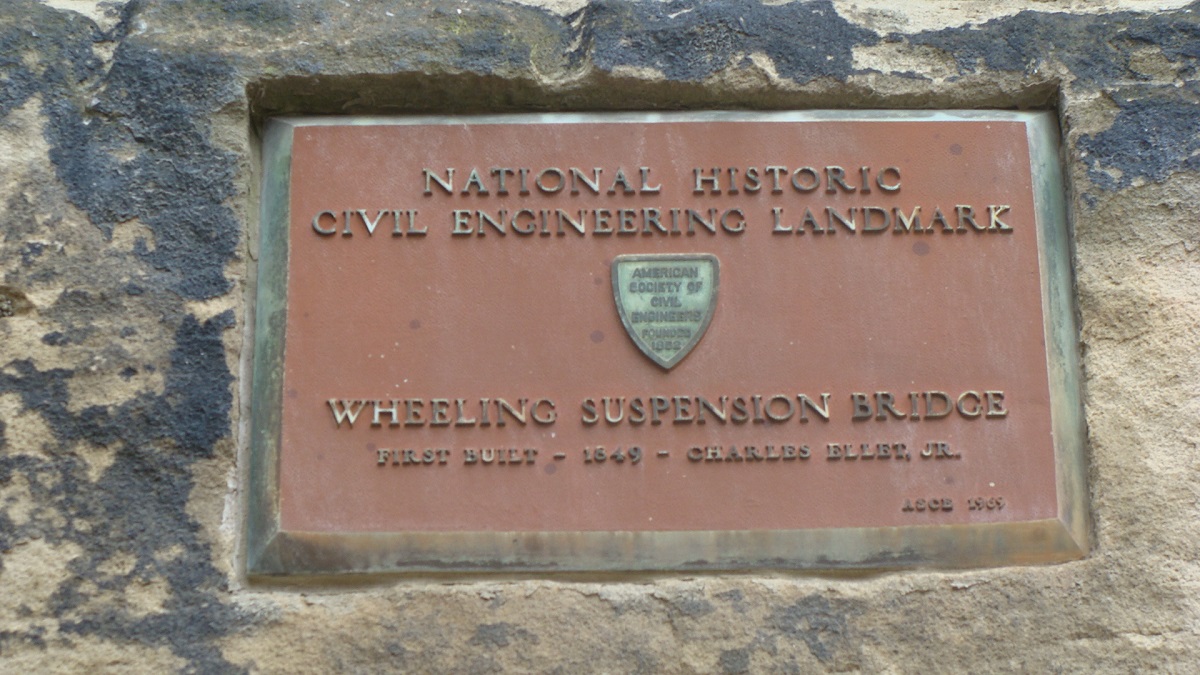Wheeling Suspension Bridge
40 04 12.8 N
80 43 36.7 W

"We have seen the stones laid one upon another, and like the workman who builds himself to the top of the highest tower, we scarcely appreciate the work we have done. ... But the stranger, who sees it for the first time, looks up with awe and wonder to those immense towers and gigantic cables. ... Wonderful as the age is, this is truly one of its most wonderful and majestic works. ..."
- The Daily Wheeling Gazette, Oct. 1, 1849
The Wheeling Suspension Bridge was the first bridge to span the Ohio River. It was initially completed in 1849, but destroyed by a tornado five years later. The bridge was rebuilt in 1856. The replacement bridge has the same general appearance of the original structure; the massive towers, anchorage housings, and island approach are all the original stone masonry.
In the early 1870s, auxiliary stay cables were added to strengthen the bridge according to a design by Washington Roebling. This effectively "Roeblingized" the appearance of the bridge suspension system, although the main cables and the vertical suspenders remained unaltered. Over the next 80 years, other improvements were made to the bridge to enable it to keep pace with changing traffic conditions. In 1956 the bridge was stripped to its towers, cables and suspenders, and completely overhauled. When reopened, the bridge served restricted traffic and still is limited to automobile and pedestrian use.
Facts
- The span is 1,010 feet from tower to tower.
- The flooring is supported by twelve iron cables suspended from the towers.
- The cables are anchored to masonry walls built under Wheeling's Main Street.
- The cables rest on cast iron rollers that adapt to cable movements caused by changes in temperature or transitory loads.
- The strength of the bridge was sufficient to resist 297 tons, or 32 heavily-laden road wagons, 192 horses and 500 people.


